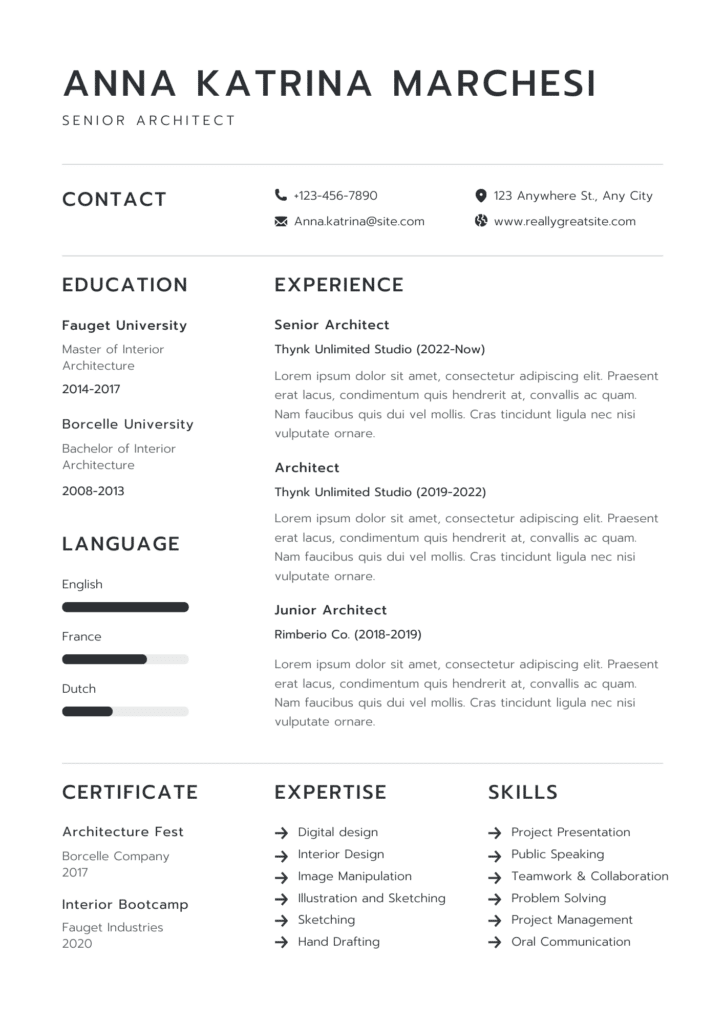Landing a job in Canada isn’t just about having the right qualifications—it’s about presenting them the right way. The Canadian job market is highly competitive, and your resume is the first impression you make on potential employers. Many newcomers struggle because their resumes don’t match Canadian standards, leading to missed opportunities.
If you’re planning to work in Canada or are already job hunting, crafting a strong, ATS-friendly (Applicant Tracking System) resume tailored to Canadian expectations is crucial. This guide will help you decode the key elements of a successful Canadian-style resume and ensure that you stand out to recruiters.
For a more holistic approach to settling in Canada, check out our guide on Unlocking Your Canadian Dream: Essential Guide for New Visa Holders.
Understanding the Canadian Resume Format
1. Keep It Concise and Focused
Hiring managers in Canada typically spend only a few seconds scanning a resume. Keep your resume concise, ideally limited to one or two pages. Focus on showcasing your most relevant experience rather than listing every job you’ve ever held.
2. Use a Reverse-Chronological Format
A standard Canadian resume follows a reverse-chronological order, meaning your most recent work experience should appear first. This format allows recruiters to quickly see your latest achievements and career progression.
3. Avoid Personal Information
Unlike some other countries, Canadian resumes do not include personal details such as age, marital status, religion, or a photograph. This helps prevent bias in the hiring process and ensures compliance with employment laws.
Key Sections of a Canadian-Style Resume
1. Contact Information
At the top of your resume, include your full name, phone number, professional email address, and LinkedIn profile (if applicable). Avoid adding unnecessary details like your home address.
2. Professional Summary or Objective
A brief, compelling summary (2–3 sentences) should highlight your key skills, experience, and what you bring to the table. This is your chance to grab the employer’s attention right away.
3. Work Experience
List your work experience in reverse-chronological order. Include your job title, company name, location, and dates of employment. Use bullet points to describe your responsibilities and achievements, quantifying results where possible (e.g., “Increased sales by 25% in six months”).
4. Skills Section
Highlight key skills relevant to the job you’re applying for. Be specific—mention technical skills, software proficiency, and industry-specific competencies.
5. Education
Include your degrees, diplomas, or certifications, along with the institution’s name and graduation year. If you’re a recent graduate, you can also list relevant coursework or academic projects.
6. Certifications and Training (Optional)
If you have additional certifications, workshops, or training relevant to the role, list them in this section.
7. Volunteer Experience (Optional)
Volunteering can enhance your resume, especially if you’re new to Canada and have limited local work experience. It shows your commitment to the community and willingness to contribute.
Formatting Tips for a Canadian Resume
- Font & Size: Use professional fonts like Arial, Calibri, or Times New Roman (size 10–12 pt).
- Bullet Points: Use bullet points instead of long paragraphs for easy readability.
- Consistency: Maintain a consistent format, alignment, and spacing throughout the document.
- ATS-Friendly: Avoid using images, graphics, or tables, as applicant tracking systems may not process them correctly.
Common Mistakes to Avoid
- Submitting a resume that’s too long or cluttered.
- Using generic, vague language instead of quantifiable achievements.
- Including irrelevant work experience or skills.
- Failing to tailor your resume for each job application.
- Not proofreading for spelling and grammatical errors.


FAQs on Canadian-Style Resumes
1. Do I need to include a cover letter with my resume? Yes, a well-written cover letter can strengthen your application by providing context for your experience and demonstrating your enthusiasm for the role.
2. Should I include references on my resume? No, it’s not necessary to include references on your resume. Instead, you can mention “References available upon request.”
3. How do I tailor my resume for different job applications? Customize your resume by aligning your skills and experience with the job description. Use keywords from the job posting to optimize for applicant tracking systems.
4. What if I don’t have Canadian work experience? Highlight transferable skills, international experience, and volunteer work in Canada. Networking and gaining local experience through internships or volunteering can also be beneficial.
A Canadian-style resume is your key to making a great first impression with employers. By following the right format, showcasing your relevant experience, and avoiding common mistakes, you can significantly improve your chances of landing a job in Canada. Take the time to tailor your resume for each application, keep it concise, and make sure it reflects your strengths in the best possible way.
Start applying with confidence and take the next step in your Canadian job search today!

